Elf
Tall, graceful, and extraordinarily beautiful, the elves claim the forest of their ancestors.
Blessed with keen eyesight and a great talent for archery, they have created a long-lasting tradition of rangers and druids to protect their kingdoms from outside threats. Their deep knowledge of the woodlands further complimented their deadly and silent armies, making them a force to be reckoned with.
- Reputation: Elves are revered for their ethereal beauty, longevity, and wisdom, often seen as aloof or enigmatic due to their deep connection to nature and the arcane, leading others to view them as distant and haugthy.
General Information
Homo serenus
Geographic Distribution
Majority in Tana's Empire
Languages
Common, Elvish
Physiologie
750 years
Size
Medium
Average Height
1.55 m Male, 1.45 m Female (wood elves)
1.9 m Male, 1.75 m Female (other elves)
Average Weight
37‒68.9 kg
Others
Culture
Trance
A memory is a curious thing. One can come into consciousness unbidden, evoked by an unexpected scent or the words spoken by a friend. A memory can also be elusive, foiling all attempts to recall it and sometimes remembered only after the hunt is abandoned, like a word on the tip of one’s tongue. Some memories pull at the heart, weighing it down and holding it there as an anchor moors a ship. Others buoy it up or make it flutter joyously like the wings of a bird. Some memories lie in wait like predators, ready to leap out when the mind or the heart is vulnerable. Some linger like scars, not always visible but ever-present. Perhaps more so than any other race, elves are familiar with all aspects of memory. From birth, elves don’t sleep but instead enter a trance when they need to rest. In this state, elves remain aware of their surroundings while immersing themselves in memories. What an elf remembers during this reverie depends largely on how long the elf has lived, and the events of the lives that the elf’s soul has experienced before.Childhood
During a young elf’s first few years, the trance is only a relaxation state, and he is unable to recall memory of his experiences, An elves is considered adult, when he can reflect on his memories during his trance. Trance is taboo with young elves until a momery of their life first appear during their trance. This experience, called the First Reflection, markets the end of childhood and the start of adolescence.Adolescence
Most elves experience their First Reflection in their second or third decade. It marks the beginning of the period when an elf must focus on acquiring the knowledge and skills needed for the elf’s role as an adult. As a means to this end, elves in adolescence learn how to use trance to evoke memories, giving them opportunities to reflect on the joys of the mortal world and to reinforce the principles of any training or practice undertaken while awake.Adulthood
When an elf training is over, it is considered an adult. This typically occurs at the end of the first century of life. An elf enters the prime of life, a span of centuries during which most elves strive to engage with the world. An adult elf learns how to control the memories that bubble up during trance, choosing to recall experiences from its life that enhance its training or give it solace in bad times. This is the stage of elven life that others are most familiar with because it’s the age when elves move outside their reclusive communities and interact with the larger world. They strive to have a permanent effect on the world, to change things for the better (as they see it). Elves want to leave a mark on the world that future generations will remember. Over time, an adult elf can become accomplished in many endeavors while pursuing its destiny. It isn’t unusual among elves to meet someone who is expert in disparate disciplines, such as a battle wizard who also is a settlement’s best vintner and famous for creating delicate wood carvings. This versatility speaks to every adult elf’s eagerness for new experiences, because memories of adventures, escapades, and accomplishments will fuel the next and possibly longest phase of one’s life.Elder Elves
At some point during adulthood, the reverie of an elf’s trance is first interrupted by a new form of unbidden thought. This seemingly errant memory arises not from the elf’s personal experience, but from other elves experience, friends and family of the individual. An elf’s first experience of this sort is often referred to as the Revelation. This event marks the start of a new phase in an elf’s life. An elf who begins to experience these other-life memories might live on as normal for decades, but as the intrusions become more frequent, they take their toll on the individual’s outlook. Eventually, an elf’s thoughts start drifting away from worldly accomplishments and turning more and more inward. This change is gradual at first, but it becomes more and more severe until it can’t be ignored. When that happens, an elf loses interest in the outside world and wants nothing more than to return home, to be surrounded by friends and family, to explore the memories they’ve accumulated in this life and keep them separate from the ever-increasing number of other-life memories that are surfacing. Most elves undergo this experience in their fifth or sixth century. Elves who led extremely active and dangerous lives, such as adventurers, seem to be affected earlier than those who pursue more sedate occupations. Notably, elves who have been revived from death by magical means seem to experience their first other-life memory earlier than they otherwise might. Regardless of how soon or how often elves experience such memories, most consider them a blessing from the gods. The experiences of other lives that are revisited during trance can be examined for lessons to be applied during one’s life, signs from the gods, or ways to open an elf’s perspective to other points of view. A handful of elves in any generation never experience an other-life memory during trance. Although most elder elves become more serene, these rare folk spend the rest of their lives throwing themselves into dangerous situations, as if daring death to try to take them.Aging and death
Most elves don’t age outwardly as other humanoids do. The skin of adults remains smooth, their hair does not gray, and their bones do not ache. Even the oldest elves look similar in age to a human of perhaps 30 years. Yet there is one sure sign that an elf is nearing the end of life: cataracts in the shape of crescents, points down, that appear over the pupils of both eyes when the elf is in trance. This change, commonly known as Transcendence, is a mark of the elves age. How much time an elf’s body has left is never certain. Whether hours or years, the period is marked by both intense joy and great sadness. Most mortal elves accept their upcoming fate with optimism or resignation, but some react by throwing themselves back into the labors of life with a frenzy other elves consider unbecoming.Timeless perspective
The elven sense of value as it relates to time is hard for humans to comprehend. An elf seldom becomes sentimentally attached to physical objects such as manufactured structures and furnishings, except those of personal significance, for the simple reason that the object is likely to become decrepit before the elf does. Even fine jewelry and steel swords become tarnished and pitted, succumbing to the ravages of age long before the years of their elven owners come to an end. Paradoxically, elves pay special interest to the ephemeral: a cloud of mayflies, bubbles in water, illusions, eclipses, rainbows, artistic performances, and so forth. They are fascinated by any thing of beauty — an object, creature, scene, or event — that might be experienced only once, but which can be captured in an elf’s memory and revisited during trance for the rest of their lives. It’s a rare elf who forms strong relationships with people of other races, particularly those whose life spans are much shorter. Humans like to believe that elves don’t form close bonds with them because the elves are saddened whenever they lose a human friend to death, but that’s only a portion of the truth. From the elven view, humans’ lives are over too soon for elves to forge what they consider a real friendship. Among elves, a hundred years of acquaintance between individuals is considered a good foundation for a close relationship. In keeping with their seeming aloofness, elves can appear cold and emotionless in the face of tragedy. They do feel the same pain that others feel, and they do mourn their losses. But they also understand, in a way that other creatures can’t, that all worldly pain is fleeting. Also, if an elf becomes too emotionally invested in a loss, the experience might be relived during trance for centuries to come. Keeping some distance between themselves and the concerns of others serves elves best. Even though they are stingy with their affection for others, most elves are excellent judges of character. Thus, they can form superficial associations with other creatures very quickly. An elf often knows within minutes of meeting someone whether that new acquaintance would be a fitting companion for a journey or an adventure, and their first impressions are seldom wrong — though it might be decades later before the relationship becomes deeply personal.Elves and Magic
Magic infuses the elves’ world. They are born with an innate understanding of magic. Yet, to master spellcasting, an elf must devote years of study and practice to it, the same as most folk. But from the moment they’re born, elves are surrounded by a culture, a philosophy, and an artistic style that incorporates and subtly reveals the mysteries of magic to someone who is receptive to the message — which elves certainly are.Characteristics
Physical features
Aging
Elves have a natural life span of seven centuries or longer thanks to the blessing of Nozdormu. Not surprisingly, this trait affects their attitude and outlook toward every aspect of mortal life. Events from centuries ago that are distant or even ancient history to humans might have been experienced firsthand by many elves who are still alive. And an elf’s memory of such events is likely more accurate than a well-researched historian’s account, because the elf can revisit the memory over and over during trance, fixing it more firmly in mind each time.Physique
With their unearthly grace and fine features, elves appear hauntingly beautiful to humans and members of many other races. They are slightly shorter than humans on average, ranging from well under 5 feet tall to just over 6 feet. They are more slender than humans, weighing only 100 to 145 pounds. Males and females are about the same height, and males are only marginally heavier than females. Elves’ coloration encompasses the normal human range and also includes skin in shades of copper, bronze, and almost bluish-white, hair of green or blue, and eyes like pools of liquid gold or silver. Elves have no facial and little body hair. They favor elegant clothing in bright colors, and they enjoy simple yet lovely jewelry. Many elves' hair changes with the season, shifting color with nature, this change can be more or less visible depending on the individual but is generally common among the elves. The drow, forced under the earth for centuries, lost their connection to the season, and therefore, lost the pigment in their hair. All drow have white hair. Elves ear are extremely long, with an average of 17 cm. Galf elves have more human like ears in size, but with a pointy shape.Biology
Much has been made of the relative fecundity of humans compared to elves. Ignorant folk wonder how elves can live so long, yet have so few children. Because of the rarity of elf births, siblings might be separated in age by decades, or even a century or more. Thus, few elves grow up playing with brothers or sisters of similar age and instead rely on friends for the development of their social skills. In exceedingly rare cases, a birth might produce twins or — scarcer yet — triplets. These offspring, which the elves refer to as soul siblings, are believed to have a special, intertwined destiny that can be fulfilled only if they are raised together.Mental traits
Elves can live well over 700 years, giving them a broad perspective on events that might trouble the shorter-lived races more deeply. They are more often amused than excited, and more likely to be curious than greedy. They tend to remain aloof and unfazed by petty happenstance. When pursuing a goal, however, whether adventuring on a mission or learning a new skill or art, elves can be focused and relentless. They are slow to make friends and enemies, and even slower to forget them. They reply to petty insults with disdain and to serious insults with vengeance. Like the branches of a young tree, elves are flexible in the face of danger. They trust in diplomacy and compromise to resolve differences before they escalate to violence. They have been known to retreat from intrusions into their woodland homes, confident that they can simply wait the invaders out. But when the need arises, elves reveal a stern martial side, demonstrating skill with sword, bow, and strategy.Lineages
The lineages and subspecies presented in this article are specific to Toriel, and may differ significantly from those found in Dungeons & Dragons. These lineages reflect the unique cultures, histories, and environments of Toriel.
Players are welcome to use the mechanics of any official or third-party lineage, but are encouraged to reflavor them as one of the lineages native to Toriel to better fit the world’s lore. Talk to your DM to find a narrative fit that works for your character and the setting.
Koada'Dal (High elf)
Koada'Dal have a keen mind and a mastery of at least the basics of magic. Koada'Dal are haughty and reclusive, believing themselves to be superior to non-elves and even other elves. The Koada'Dal of Toriel have pale skin and hair of copper, black, or golden blond. Their eyes are golden, silver, or black.- Reputation: Koada'Dal are revered for their ethereal beauty, longevity, and wisdom, often seen as aloof or enigmatic due to their deep connection to nature and the arcane, leading others to view them as distant and haugthy.
Feir'Dal (Wood elf)
Feir'Dal have keen senses and intuition, and their fleet feet carry them quickly and stealthily through their native forests. Feir'Dal are reclusive and distrusting of non-elves. Feir'Dal’ skin tends to be copperish in hue, sometimes with traces of green. Their hair tends toward browns and blacks, but it is occasionally blond or copper-colored. Their eyes are green, brown, or hazel. Feir'Dal tend to be shorter than other elves.Drow (Dark elf)
Drow typically dwell in the Underdark and have been shaped by it. Some drow individuals and societies avoid the Underdark altogether yet carry its magic.- Reputation.The drow symbolize fear, their image used to frighten misbehaving children into obedience. Even among their elven kin, the drow are shunned. Their severance from high magic marks them as outcasts.
History
The dark elves of Toriel are a people confined to Night Island. When the Great Extinction swept across the world, much of the elven race perished—but many who dwelled on the Night Island survived. Yet survival came at a cost. The magical cataclysm that accompanied the extinction disrupted the Weave itself, severing the survivors from the use of elven high magic. As war erupted between dragons and giants, the elven great cities fell, and the dark elves were forced to retreat underground. Hunted by a blood-craving dragon, they were pushed ever deeper, until they found refuge in the Underdark. Though hostile and unforgiving, the depths proved more hospitable than the chaos above. Over the course of a thousand years, the dark elves adapted—skin darkening to absorb the faintest light, eyes evolving to pierce the black, and their once-bright hair fading to pale or silvery shades. In time, they forged a new kingdom beneath the earth, a shadow of their former glory, but one born of resilience, survival, and transformation.Shadar'Dal (Shadow elf)
The shadar'dal, also called shadow fey, are the elves living in the shadowfell. When elves draw origin from the feywild, it is strange to see elves in a plane such as the shadowfell. Shadar'Dal are immune to the shadow corruption that threatens those from the mortal world, but this protection comes at a cost. Above all else, shadow fey want to experience the tantalizing emotions and passions that do not come easily to them. Shadar'Dal have alabaster skin tones, and while they’re in the Shadowfell, they also become wizened, reflecting the somber nature of that gloomy plane. The pallor of their skin, and their lack of apparent emotions come from their adaptation to this plane.Eladrin (Fey elf)
Eladrin are elves of the Feywild, a realm of perilous beauty and boundless magic. Using that magic, eladrin can step from one place to another in the blink of an eye, and each eladrin resonates with emotions captured in the Feywild in the form of seasons—affinities that affect the eladrin’s mood and appearance. An eladrin’s season can change, though some remain in one season forever.Gaer'Dal (Sea elf)
Sea elves fell in love with the wild beauty of the ocean in the earliest days of Toriel. Sea elves skin tend to be blue or green, with palmed fingers and bronchie allowing them to breath underwater.Ren'Dal (Moon elf)
Characteristics
Physical features
Their physical form is an aberration among humanoids, no longer confined by the limitations of the Material Plane. Their skin stretches and falls, revealing gaps that expose their bone structure, which can be hollow and sometimes oversized. Their spines arch, causing them to be smaller and hunched in stature, with pikes protruding from their backs. Their eyes are entirely black, and their vision is limited.Mental traits
Moon elves, once lost in the world and encountering unspeakable creatures, are cursed with constant haunting voices that seek to corrupt their minds.History
During a crusade against the crones, an elven hero named Krasnar sought to liberate his kin trapped on the moon. He approached the hag, seeking her cooperation for the elves' liberation. Endelyn Moongrave agreed to three conditions:- Krasnar would rule the elves
- Krasnar would give up his soul to her
- The liberated elves would remain in the swamps
History
Elves history along the ages can be found in the following timeline, History of the Elves.Age of Demon Dagr-
Corellon Loth, the god of elves, was the first elf that stepped onto the material plane. But, in his experimentation in order to open a portal linking the feywild to the material plane, he opened a rift to the abyss, allowing the demons to poor into Toriel, marking the beginning of the War of the Ancients. Corellon Loth finally managed to open a portal to the feywild for his kind to get in Toriel, telling them about his mistake. And thus, the first elves became warriors against the legion of demons, fighting alongside the dragons. The elves fought for years, and numerous elven heroes and legends grew during this conflict. Nymue, The betrayer was known as the elf who joined the demon's side for example. By the end of the war, Nozdormu, praised the elves for their help in this conflict, and gave them the gift of longevity, allowing their life to be as long as it is nowadays.Age of Lúg
After the great extinction, Corellon Loth opened portals to the feywild, offering a path for the rare survivor to retreat into this safer place. Except for a group of elves on Night Island, all elves disappeared from Toriel. This marked the division of the drow. Later, Corellon Loth sensing the end of the Draco-Giant War, the god of elves opened the gate to the feywild again, allowing the elves back on what was their home to reconquer.Age of Renewal
The elves back into Toriel, gladly expended, taking back the ruins of their ancients civilizations, and trying to reconstruct what was destroyed. Protecting themself for future incidents, and in an attempt to isolate themself, the elves started to surround their cities with magic as they were reconstructing them.This era unfortunately, was short-lived, especially from the elves' point of view.
Age of Opression
We drink to our youth to the days come and gone
For the age of oppression is now nearly done
We'll drive out the empire from this land that we own
With our blood and our steel we will take back our home All hail to Vari you are the new king
In your great honor we drink and we'll sing
We're the children -o Qwir and we fight all our lives
And when the dragon shout, every one of us dies But this land is ours and we'll see it wiped clean
Of the scourge that has sullied our hopes and our dreams
All hail to Vari you are the new king
In your great honor we drink and we'll sing We're the children -o Qwir and we fight all our lives
And when the dragon shout, every one of us dies
We drink to our youth to days come and gone
For the age of oppression is now nearly done
The elven army is deadly and silent, and the elves deep knowledge of their woods make them a force to be reckoned with, but their number lacking to face the army of the humans during Tana's Great Reunion.
Tana's Great Reunion cost the elves dearly. Their kingdoms were forced into submission, and a great part of their forest was turned to ash. Even though their bows were precise, they were outnumbered and unable to defend themselves on all fronts as war-hungry armies burned their sheltering forests.
Some elves, refusing to be ruled by the humans, lived for decades as nomads, trying to hide in the forests on the outskirts of the human civilization. And to this day, rare groups of elves keep on fighting this way.
For the age of oppression is now nearly done
We'll drive out the empire from this land that we own
With our blood and our steel we will take back our home All hail to Vari you are the new king
In your great honor we drink and we'll sing
We're the children -o Qwir and we fight all our lives
And when the dragon shout, every one of us dies But this land is ours and we'll see it wiped clean
Of the scourge that has sullied our hopes and our dreams
All hail to Vari you are the new king
In your great honor we drink and we'll sing We're the children -o Qwir and we fight all our lives
And when the dragon shout, every one of us dies
We drink to our youth to days come and gone
For the age of oppression is now nearly done


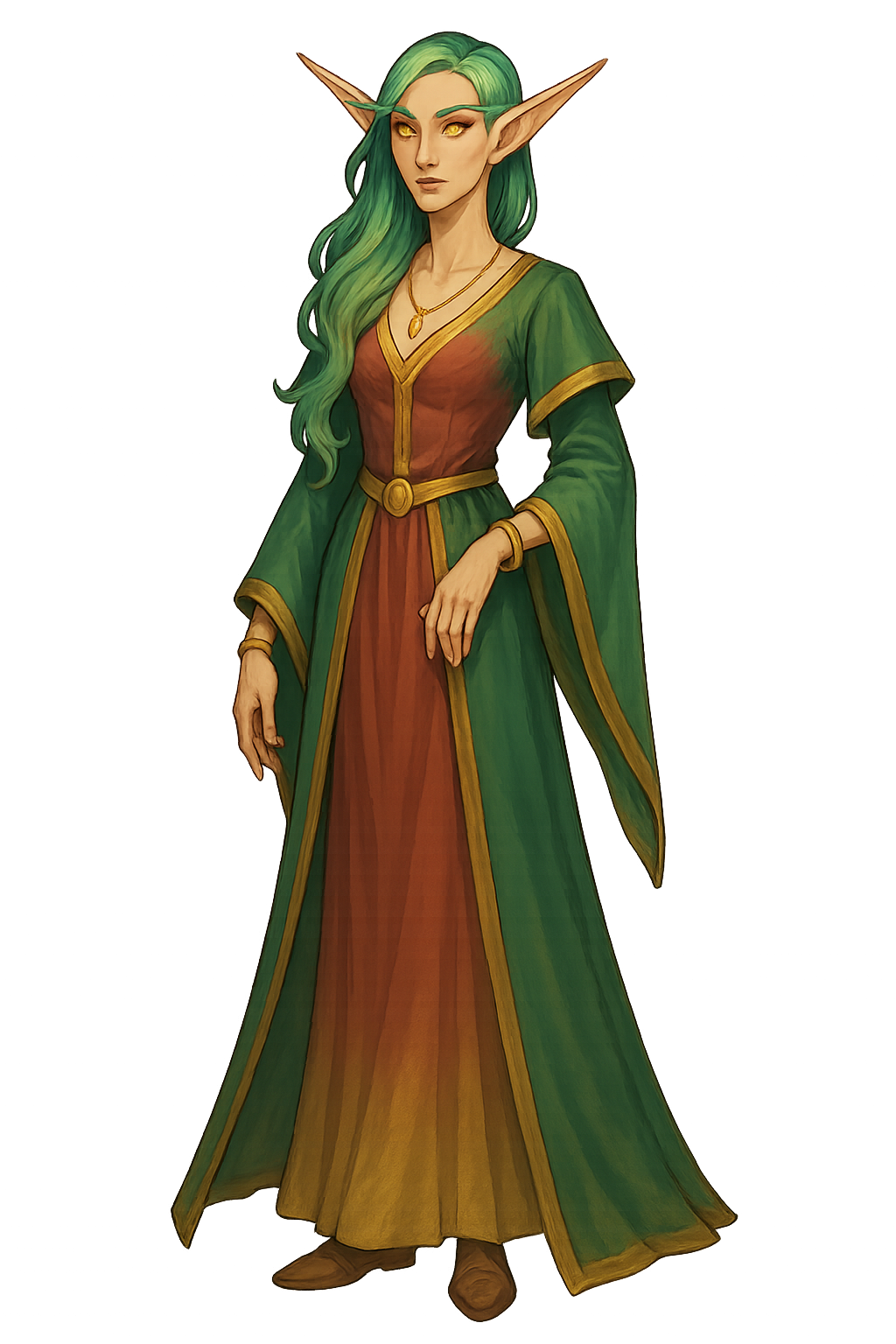
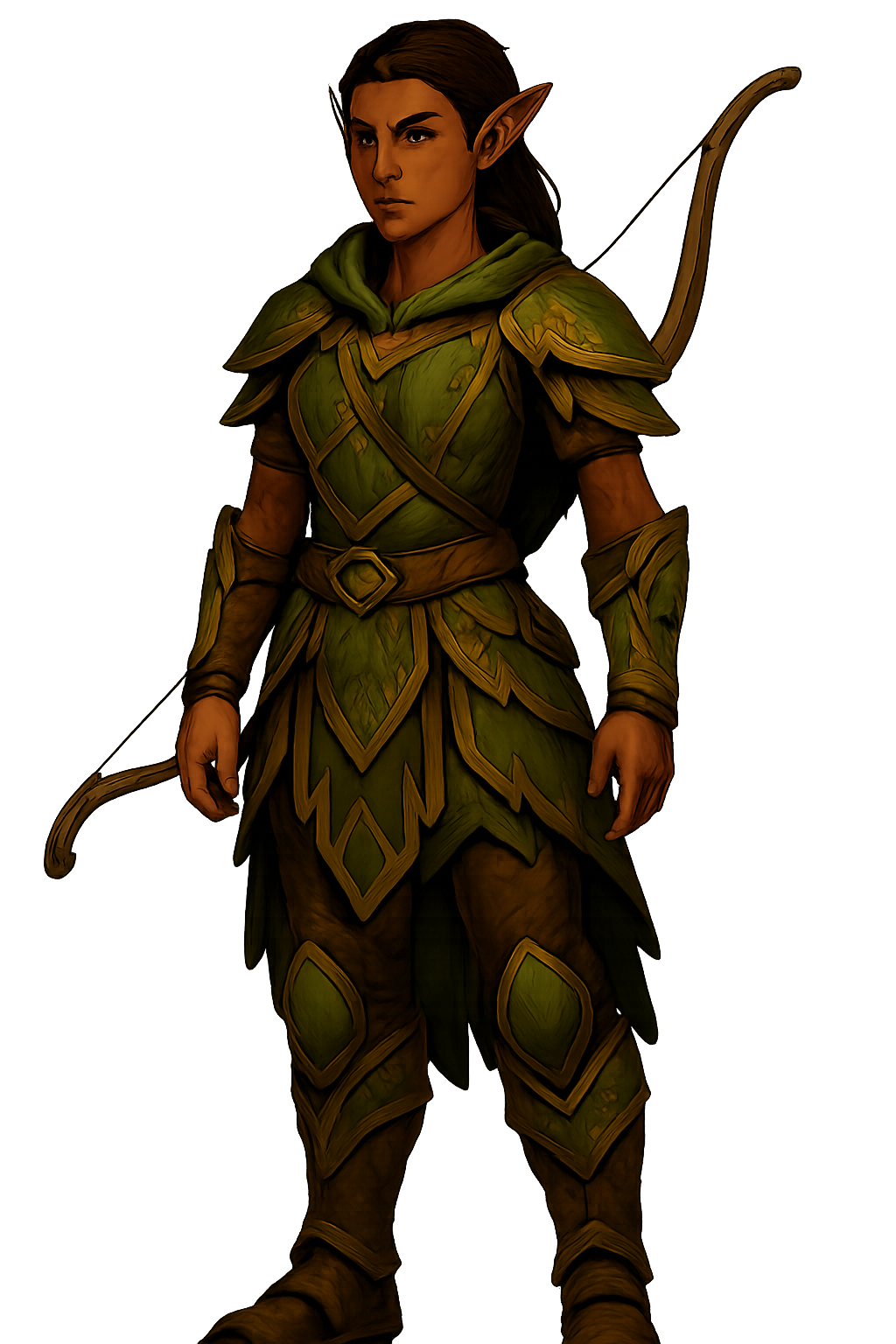
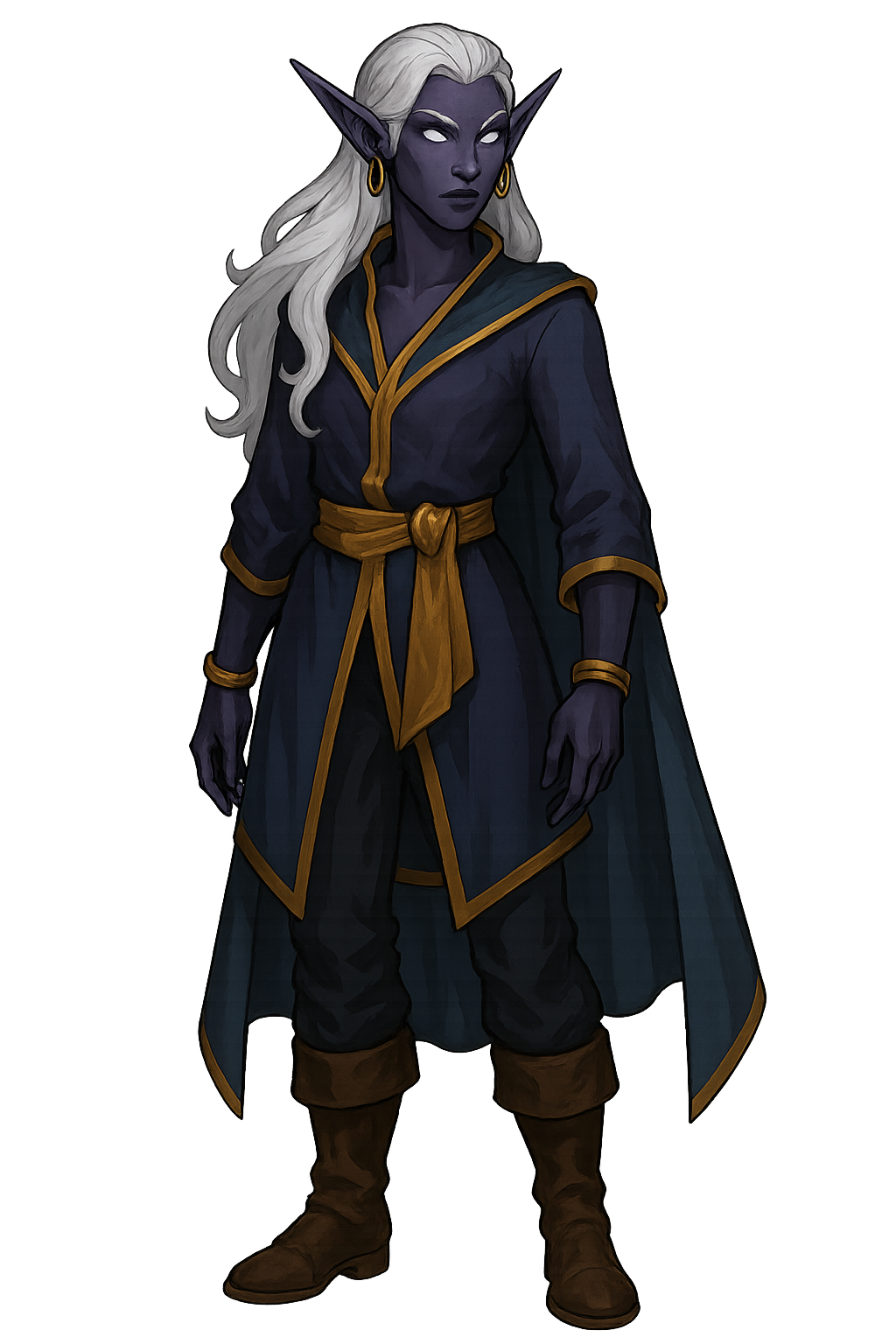
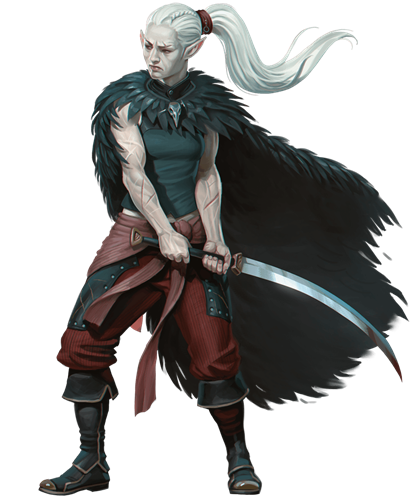
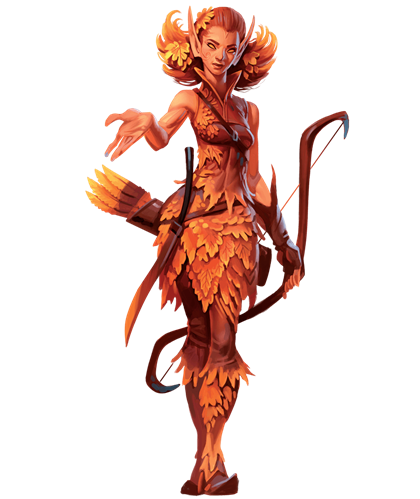
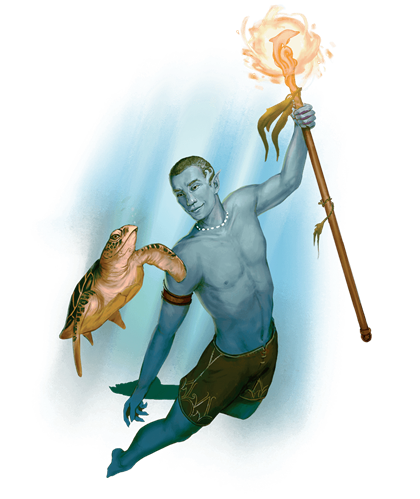
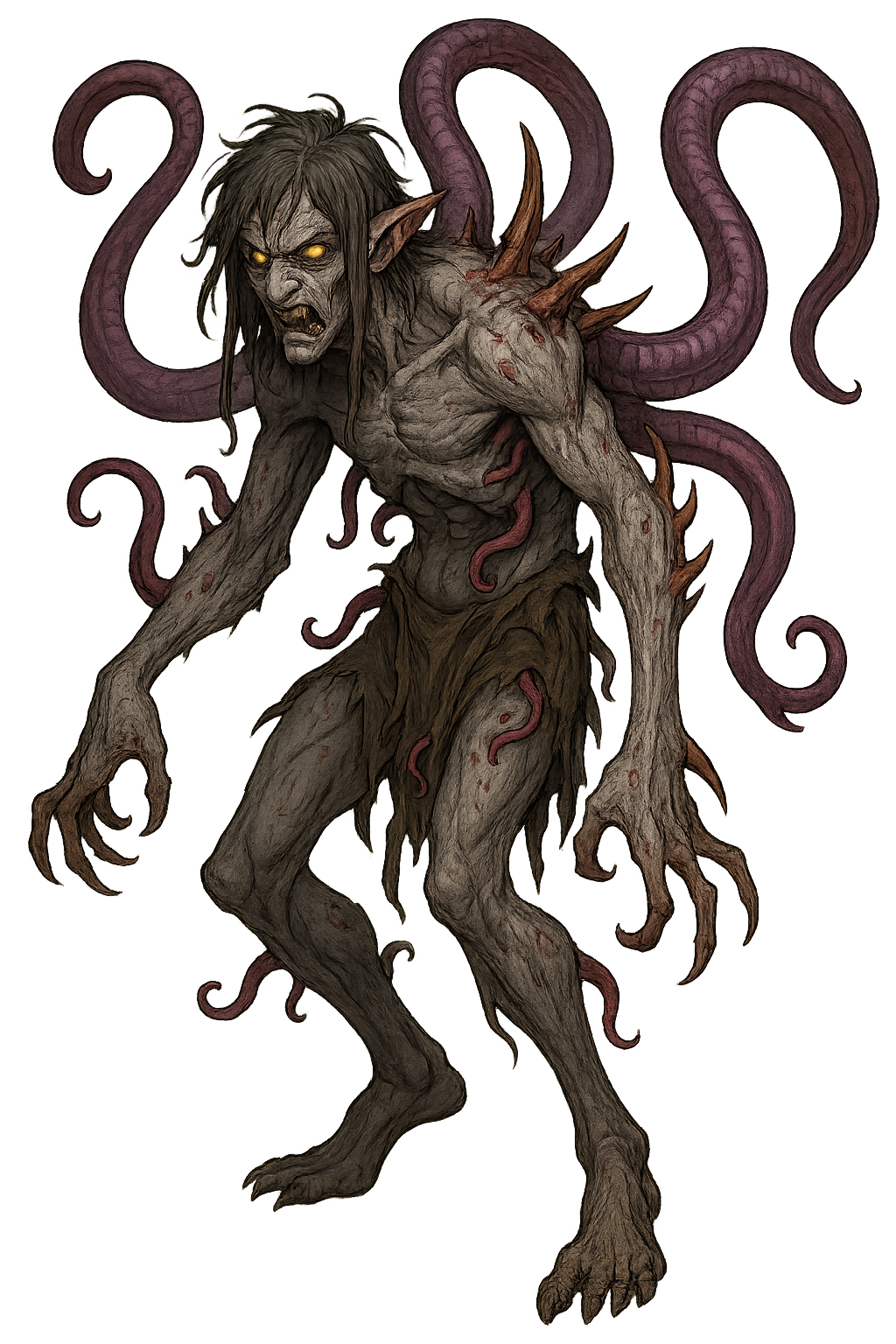



Comments